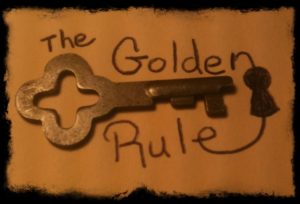Changing Approaches to Leadership Between Men and Women

Today’s American workforce is almost equally made up of men and women. How does this affect the way any leader, whether male or female, deals with employees? Below are five key areas where the difference in gender can impact leadership effectiveness. By ensuring your leaders are aware of these differences, you are preparing them to be successful in this gender equal workforce.
 Empathy is not weakness: Many women tend to understand this principle naturally and some men have to learn it. Empathy is about letting people know you care. It is not about leading with ego, rather, with service. As President Theodore Roosevelt said, “No one cares how much you know until they know how much you care”, and that has never been truer today. Leaders who take the time to listen to their people and respond empathetically will motivate a workforce more quickly.
Empathy is not weakness: Many women tend to understand this principle naturally and some men have to learn it. Empathy is about letting people know you care. It is not about leading with ego, rather, with service. As President Theodore Roosevelt said, “No one cares how much you know until they know how much you care”, and that has never been truer today. Leaders who take the time to listen to their people and respond empathetically will motivate a workforce more quickly.
Action: Next time, rather than rushing through the office, take five minutes to visit with your employees. Ask about family. Ask them about their weekend. Take an interest in their personal life. They will feel respected and know you care.
Be flexible: When dealing with a mixed gender workforce, leaders need to be more  understanding of needed time off. Without falling back on old stereotypes, the male may need to take time off for the birth of a child, for example. Whether it’s a sick family member, or other personal problems, leaders should allow flexibility in the work schedule.
understanding of needed time off. Without falling back on old stereotypes, the male may need to take time off for the birth of a child, for example. Whether it’s a sick family member, or other personal problems, leaders should allow flexibility in the work schedule.
Action: Set up a way for employees to work from home, trade hours, donate vacation time or help each other out when they need to be absent for personal/family reasons. This will go a long way towards earning their loyalty.
 Communication: Many books have been written about the difference in the way men and women communicate. Men can tend to be more direct and use logic as their first filter when making decisions. Women on the other hand, typically like to talk things through and use emotion as part of the decision making process. Leaders who understand when to use the phrase “What do you think?” vs “How do you feel?” will go a long way in improving their communication between genders.
Communication: Many books have been written about the difference in the way men and women communicate. Men can tend to be more direct and use logic as their first filter when making decisions. Women on the other hand, typically like to talk things through and use emotion as part of the decision making process. Leaders who understand when to use the phrase “What do you think?” vs “How do you feel?” will go a long way in improving their communication between genders.
Action: Have your team undergo a Myers Briggs Assessment to find out if they are Thinkers or Feelers. Then learn the appropriate language to use with each to maximize communication.
Gender Diversity Training: This is not about race or religion. In many companies it falls under Sexual Harassment education. It’s about respecting each other’s differences as men and women and addressing perceptions that interfere with the ability to work together.
Action: Host a round table discussion with your team to address issues that may offend the opposite sex. These could include: foul language, inappropriate dress, off-color humor, sexual innuendo, etc. By being aware of what could offend your team, leaders can build a more respectful gender appropriate work environment.
“Treat others as they would like to be treated”.  Recognizing employees is not an area where you should use the same approach for all. Recognition is a personal preference. As a rule (although there are many exceptions), men love to attend sporting venues whereas a woman may choose a day at the spa. Know what your employees want and customize your reward system appropriately.
Recognizing employees is not an area where you should use the same approach for all. Recognition is a personal preference. As a rule (although there are many exceptions), men love to attend sporting venues whereas a woman may choose a day at the spa. Know what your employees want and customize your reward system appropriately.
Action: Send a survey to your team and find out the top three things they like to do for fun, and then incorporate it into your recognition program. This will keep you from missing the mark and will ensure employees, whether male or female, have fun and truly feel appreciated.
 As more and more women enter the workforce and assume leadership positions, it is incumbent upon companies to address issues of gender diversity, especially as it pertains to the five areas listed above. Smart companies like Southwest Airlines, where I was a leader for 15 years, taught me one overarching rule that trumps all: RESPECT. Aretha said it first.
As more and more women enter the workforce and assume leadership positions, it is incumbent upon companies to address issues of gender diversity, especially as it pertains to the five areas listed above. Smart companies like Southwest Airlines, where I was a leader for 15 years, taught me one overarching rule that trumps all: RESPECT. Aretha said it first.
Lorraine Grubbs is an author, speaker and business consultant helping companies create "Happy Workplaces". Learn more about what she does at www.lorrainegrubbs.com.


 Empathy is not weakness: Many women tend to understand this principle naturally and some men have to learn it. Empathy is about letting people know you care. It is not about leading with ego, rather, with service. As President Theodore Roosevelt said, “No one cares how much you know until they know how much you care”, and that has never been truer today. Leaders who take the time to listen to their people and respond empathetically will motivate a workforce more quickly.
Empathy is not weakness: Many women tend to understand this principle naturally and some men have to learn it. Empathy is about letting people know you care. It is not about leading with ego, rather, with service. As President Theodore Roosevelt said, “No one cares how much you know until they know how much you care”, and that has never been truer today. Leaders who take the time to listen to their people and respond empathetically will motivate a workforce more quickly. understanding of needed time off. Without falling back on old stereotypes, the male may need to take time off for the birth of a child, for example. Whether it’s a sick family member, or other personal problems, leaders should allow flexibility in the work schedule.
understanding of needed time off. Without falling back on old stereotypes, the male may need to take time off for the birth of a child, for example. Whether it’s a sick family member, or other personal problems, leaders should allow flexibility in the work schedule. Communication: Many books have been written about the difference in the way men and women communicate. Men can tend to be more direct and use logic as their first filter when making decisions. Women on the other hand, typically like to talk things through and use emotion as part of the decision making process. Leaders who understand when to use the phrase “What do you think?” vs “How do you feel?” will go a long way in improving their communication between genders.
Communication: Many books have been written about the difference in the way men and women communicate. Men can tend to be more direct and use logic as their first filter when making decisions. Women on the other hand, typically like to talk things through and use emotion as part of the decision making process. Leaders who understand when to use the phrase “What do you think?” vs “How do you feel?” will go a long way in improving their communication between genders. Recognizing employees is not an area where you should use the same approach for all. Recognition is a personal preference. As a rule (although there are many exceptions), men love to attend sporting venues whereas a woman may choose a day at the spa. Know what your employees want and customize your reward system appropriately.
Recognizing employees is not an area where you should use the same approach for all. Recognition is a personal preference. As a rule (although there are many exceptions), men love to attend sporting venues whereas a woman may choose a day at the spa. Know what your employees want and customize your reward system appropriately. As more and more women enter the workforce and assume leadership positions, it is incumbent upon companies to address issues of gender diversity, especially as it pertains to the five areas listed above. Smart companies like Southwest Airlines, where I was a leader for 15 years, taught me one overarching rule that trumps all: RESPECT. Aretha said it first.
As more and more women enter the workforce and assume leadership positions, it is incumbent upon companies to address issues of gender diversity, especially as it pertains to the five areas listed above. Smart companies like Southwest Airlines, where I was a leader for 15 years, taught me one overarching rule that trumps all: RESPECT. Aretha said it first.